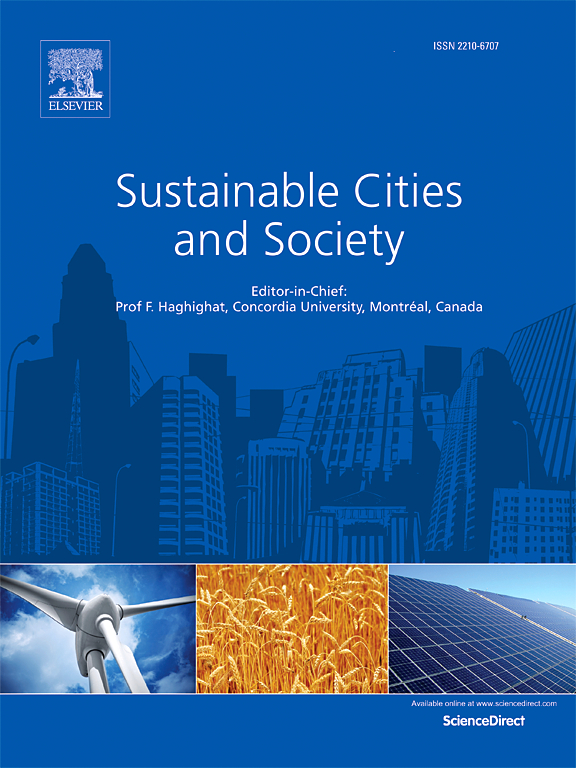Risk-based scheduling of multi-energy microgrids with Power-to-X technology under a multi-objective framework
IF 10.5
1区 工程技术
Q1 CONSTRUCTION & BUILDING TECHNOLOGY
引用次数: 0
Abstract
Power to X (P2X) technologies coupled with energy storage systems serve as a bridge among the various energy vectors to enhance the flexibility of Multi-Energy Microgrids (MEMs). The current research examines a multi-objective approach for scheduling a MEM integrated with P2X conversion technology. The main goal is to minimize three conflicting objectives: operational cost, risk, and CO2 emissions. The suggested risk-based scheduling is solved through the augmented ε-constraint method to address the economic/environmental aspects of the problem. Two risk management tools of Conditional Value at Risk (CVaR) and a robust approach are proposed to deal with uncertainties in the MEM's scheduling. Besides, the proposed MEM benefits from P2X converters, various storage technologies, demand response resources, renewable resources, and energy market bidding. This enables the MEM to transform the power into other carriers of thermal, hydrogen, and synthetic gas to meet various energy demands, effectively. The simulation results show that adopting a risk-neutral unconservative risk strategy results in an expected operating cost of $7,400 and carbon emission of 58 tCO2. In this situation, a 21 % reduction in CVaR due to the risk-averse strategy leads to a 24 % increase in operation cost and a 20 % reduction in emission. Moreover, adopting the robust approach to regulation service prices increases the operational cost compared with the corresponding risk-averse unconservative strategy.
求助全文
约1分钟内获得全文
求助全文
来源期刊

Sustainable Cities and Society
Social Sciences-Geography, Planning and Development
CiteScore
22.00
自引率
13.70%
发文量
810
审稿时长
27 days
期刊介绍:
Sustainable Cities and Society (SCS) is an international journal that focuses on fundamental and applied research to promote environmentally sustainable and socially resilient cities. The journal welcomes cross-cutting, multi-disciplinary research in various areas, including:
1. Smart cities and resilient environments;
2. Alternative/clean energy sources, energy distribution, distributed energy generation, and energy demand reduction/management;
3. Monitoring and improving air quality in built environment and cities (e.g., healthy built environment and air quality management);
4. Energy efficient, low/zero carbon, and green buildings/communities;
5. Climate change mitigation and adaptation in urban environments;
6. Green infrastructure and BMPs;
7. Environmental Footprint accounting and management;
8. Urban agriculture and forestry;
9. ICT, smart grid and intelligent infrastructure;
10. Urban design/planning, regulations, legislation, certification, economics, and policy;
11. Social aspects, impacts and resiliency of cities;
12. Behavior monitoring, analysis and change within urban communities;
13. Health monitoring and improvement;
14. Nexus issues related to sustainable cities and societies;
15. Smart city governance;
16. Decision Support Systems for trade-off and uncertainty analysis for improved management of cities and society;
17. Big data, machine learning, and artificial intelligence applications and case studies;
18. Critical infrastructure protection, including security, privacy, forensics, and reliability issues of cyber-physical systems.
19. Water footprint reduction and urban water distribution, harvesting, treatment, reuse and management;
20. Waste reduction and recycling;
21. Wastewater collection, treatment and recycling;
22. Smart, clean and healthy transportation systems and infrastructure;
 求助内容:
求助内容: 应助结果提醒方式:
应助结果提醒方式:


